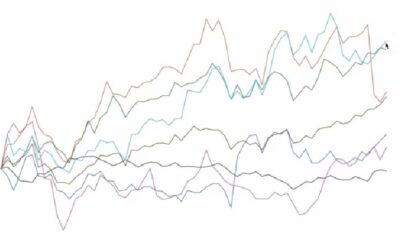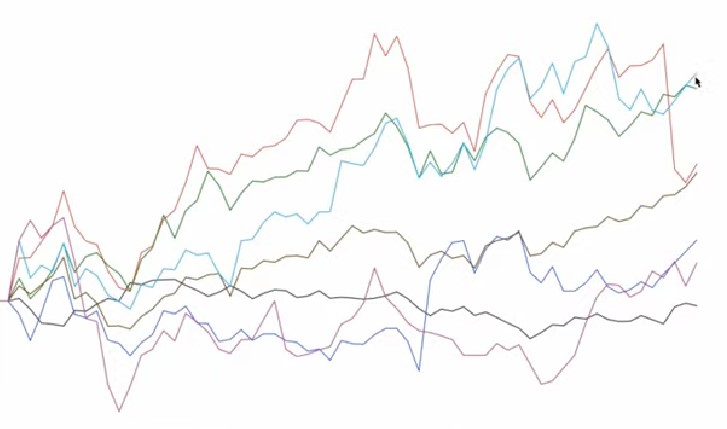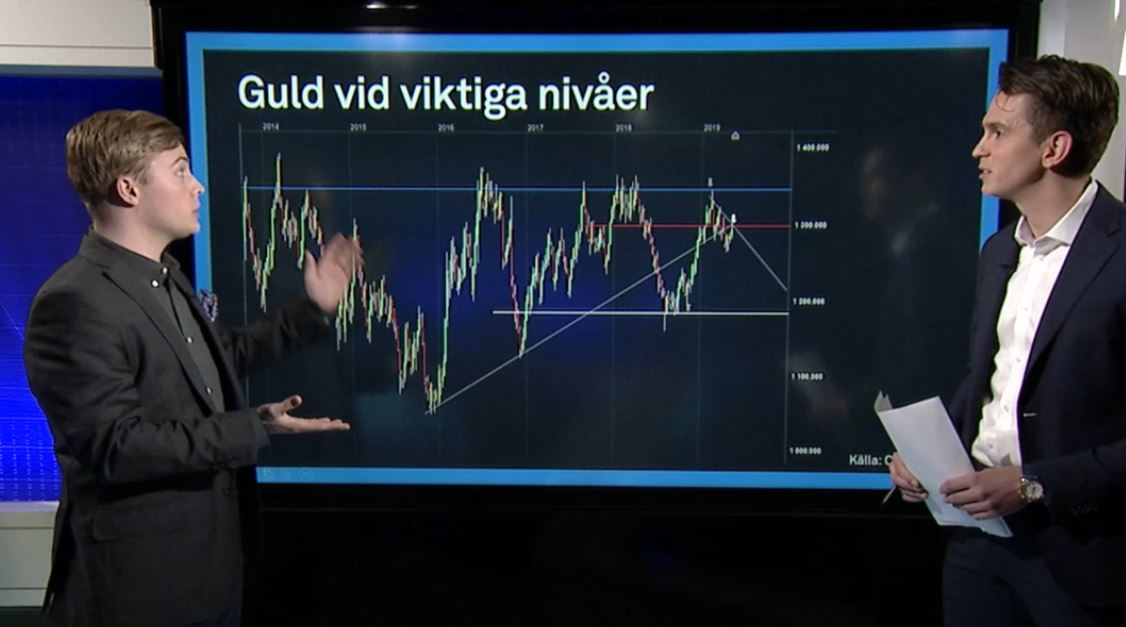Analys från DailyFX
AUD/USD Short Term Outlook Heading Into RBA Rate Decision
Talking Points:
– AUD/USD price action showing bearish signs, but SSI is hinting at higher prices
– RBA Rate Decision the main event risk on the docket ahead
– Last time the RBA met the market went on a “rate cut rally”, a hold on rates is expected this time
The AUD/USD is trading higher, testing the 0.76 handle at the time of writing, picking up after the market reversed initial NFP US Dollar weakness as we suspected.
Longer term price action is displaying some bearish signs, but with the RBA rate decision on tap things could change quickly.
Against this backdrop we will form our outlook and look to find short term trading opportunities using different tools such as the Grid Sight Index (GSI) indicator.

Click Here for the DailyFX Calendar
The Reserve Bank of Australia Rate Decision is set to hit the wires 04:30 GMT.
The RBA is expected to keep the benchmark interest rate unchanged at record low 1.5%, in what will be Governor Glenn Stevens’s final rate decision, after the bank cut rates two times in the past four months.
Last time the RBA acted, the market went on a “rate cut rally”, as we suspected, apparently on a search for yield basis in a record low rates environment.
The currency’s strength has been a headwind for the Australian economy, as was stated by the bank, but with the prospects of potential rate hike/s by the Fed by year end, some pressure might have been taken off.
With that said, the RBA seems likely to attempt to signal further potential easing down the line. Markets are pricing in a 40% probability of more easing by end 2016 at this point in time.
A surprise rate cut will almost certainly see the Aussie tumble, but if the “more likely” scenario of a slightly dovish hold takes place, the same pattern from the last decision might repeat itself, with any knee-jerk weakness seen as a buying opportunity by Aussie bulls.
2Q’16 GDP is also on tap this week for an expected solid 3.2% annual rise. The combination of a higher yield, potential limited scope to cut rates and solid growth might be enough to keep the Aussie bid in early September until further rises in Fed bets.
AUD/USD Technical Levels:

Click here for the DailyFX Support Resistance tool
We use volatility measures as a way to better fit our strategy to market conditions. The Australian Dollar is expected to be more volatile than most majors versus its US counterpart based on 1-week and 1-month implied volatility measures (only Yen more).
With that said, volatility has been subdued lately with 20-day ATR measures sitting at the lowest levels this year, and the US is on holiday today.
In turn, this might suggest that the Aussie could remain quiet in the short term but pick up following the RBA for breakout type of plays.
AUD/USD 30-Min Chart (With the GSI Indicator): September 5, 2016
(Click to Enlarge)
The AUD/USD is trading at potential resistance around 0.76, with GSI calculating higher percentages of past movement to the upside in the short term.
The GSI indicator above calculates the distribution of past event outcomes given certain momentum patterns. By matching events in the past, GSI describes how often the price moved in a certain direction.
You can learn more about the GSI here, and download the Trade Station version here.
Other resistance levels to watch might be 0.76245, 0.7650, 0.7674 and the area above 0.77.
Levels of support may be 0.7575, 0.7500, 0.7460, and 0.7400.
We generally want to see GSI with the historical patterns significantly shifted in one direction, which alongside a pre-determined bias and other technical tools could provide a solid trading idea that offer a proper way to define risk.
We studied over 43 million real trades and found that traders who successfully define risk were three times more likely to turn a profit.
Read more on the “Traits of Successful Traders” research.
Meanwhile, the DailyFX Speculative Sentiment Index (SSI) is showing that about 47.8% of FXCM’s traders are long the AUD/USD at the time of writing after flipping short at the start of this week’s trading, offering a slight long bias on a contrarian basis.
You can find more info about the DailyFX SSI indicator here
— Written by Oded Shimoni, Junior Currency Analyst for DailyFX.com
To contact Oded Shimoni, e-mail oshimoni@dailyfx.com
Follow him on Twitter at @OdedShimoni
Analys från DailyFX
EURUSD Weekly Technical Analysis: New Month, More Weakness
What’s inside:
- EURUSD broke the ‘neckline’ of a bearish ‘head-and-shoulders’ pattern, April trend-line
- Resistance in vicinity of 11825/80 likely to keep a lid on further strength
- Targeting the low to mid-11600s with more selling
Confidence is essential to successful trading, see this new guide – ’Building Confidence in Trading’.
Coming into last week we pointed out the likelihood of finally seeing a resolution of the range EURUSD had been stuck in for the past few weeks, and one of the outcomes we made note of as a possibility was for the triggering of a ’head-and-shoulders’ pattern. Indeed, we saw a break of the ’neckline’ along with a drop below the April trend-line. This led to decent selling before a minor bounce took shape during the latter part of last week.
Looking ahead to next week the euro is set up for further losses as the path of least resistance has turned lower. Looking to a capper on any further strength there is resistance in the 11825-11880 area (old support becomes new resistance). As long as the euro stays below this area a downward bias will remain firmly intact.
Looking lower towards support eyes will be on the August low at 11662 and the 2016 high of 11616, of which the latter just happens to align almost precisely with the measured move target of the ‘head-and-shoulders’ pattern (determined by subtracting the height of the pattern from the neckline).
Bottom line: Shorts look set to have the upperhand as a fresh month gets underway as long as the euro remains capped by resistance. On weakness, we’ll be watching how the euro responds to a drop into support levels.
For a longer-term outlook on EURUSD, check out the just released Q4 Forecast.
EURUSD: Daily
—Written by Paul Robinson, Market Analyst
You can receive Paul’s analysis directly via email bysigning up here.
You can follow Paul on Twitter at@PaulRobinonFX.
Analys från DailyFX
Euro Bias Mixed Heading into October, Q4’17

Why and how do we use IG Client Sentiment in trading? See our guide and real-time data.
EURUSD: Retail trader data shows 37.3% of traders are net-long with the ratio of traders short to long at 1.68 to 1. In fact, traders have remained net-short since Apr 18 when EURUSD traded near 1.07831; price has moved 9.6% higher since then. The number of traders net-long is 15.4% lower than yesterday and 16.4% higher from last week, while the number of traders net-short is 0.4% higher than yesterday and 10.5% lower from last week.
We typically take a contrarian view to crowd sentiment, and the fact traders are net-short suggests EURUSD prices may continue to rise. Positioning is more net-short than yesterday but less net-short from last week. The combination of current sentiment and recent changes gives us a further mixed EURUSD trading bias.
— Written by Christopher Vecchio, CFA, Senior Currency Strategist
To contact Christopher Vecchio, e-mail cvecchio@dailyfx.com
Follow him on Twitter at @CVecchioFX
To be added to Christopher’s e-mail distribution list, please fill out this form
Analys från DailyFX
British Pound Reversal Potential Persists Heading into New Quarter

Why and how do we use IG Client Sentiment in trading? See our guide and real-time data.
GBPUSD: Retail trader data shows 38.2% of traders are net-long with the ratio of traders short to long at 1.62 to 1. In fact, traders have remained net-short since Sep 05 when GBPUSD traded near 1.29615; price has moved 3.4% higher since then. The number of traders net-long is 0.1% higher than yesterday and 13.4% higher from last week, while the number of traders net-short is 10.6% lower than yesterday and 18.3% lower from last week.
We typically take a contrarian view to crowd sentiment, and the fact traders are net-short suggests GBPUSD prices may continue to rise. Yet traders are less net-short than yesterday and compared with last week. Recent changes in sentiment warn that the current GBPUSD price trend may soon reverse lower despite the fact traders remain net-short.
— Written by Christopher Vecchio, CFA, Senior Currency Strategist
To contact Christopher Vecchio, e-mail cvecchio@dailyfx.com
Follow him on Twitter at @CVecchioFX
To be added to Christopher’s e-mail distribution list, please fill out this form
-
Analys från DailyFX10 år ago
EUR/USD Flirts with Monthly Close Under 30 Year Trendline
-
Marknadsnyheter5 år ago
BrainCool AB (publ): erhåller bidrag (grant) om 0,9 MSEK från Vinnova för bolagets projekt inom behandling av covid-19 patienter med hög feber
-

 Marknadsnyheter3 år ago
Marknadsnyheter3 år agoUpptäck de bästa verktygen för att analysera Bitcoin!
-
Analys från DailyFX12 år ago
Japanese Yen Breakout or Fakeout? ZAR/JPY May Provide the Answer
-

 Marknadsnyheter2 år ago
Marknadsnyheter2 år agoDärför föredrar svenska spelare att spela via mobiltelefonen
-
Analys från DailyFX12 år ago
Price & Time: Key Levels to Watch in the Aftermath of NFP
-
Analys från DailyFX8 år ago
Gold Prices Falter at Resistance: Is the Bullish Run Finished?
-

 Nyheter7 år ago
Nyheter7 år agoTeknisk analys med Martin Hallström och Nils Brobacke











